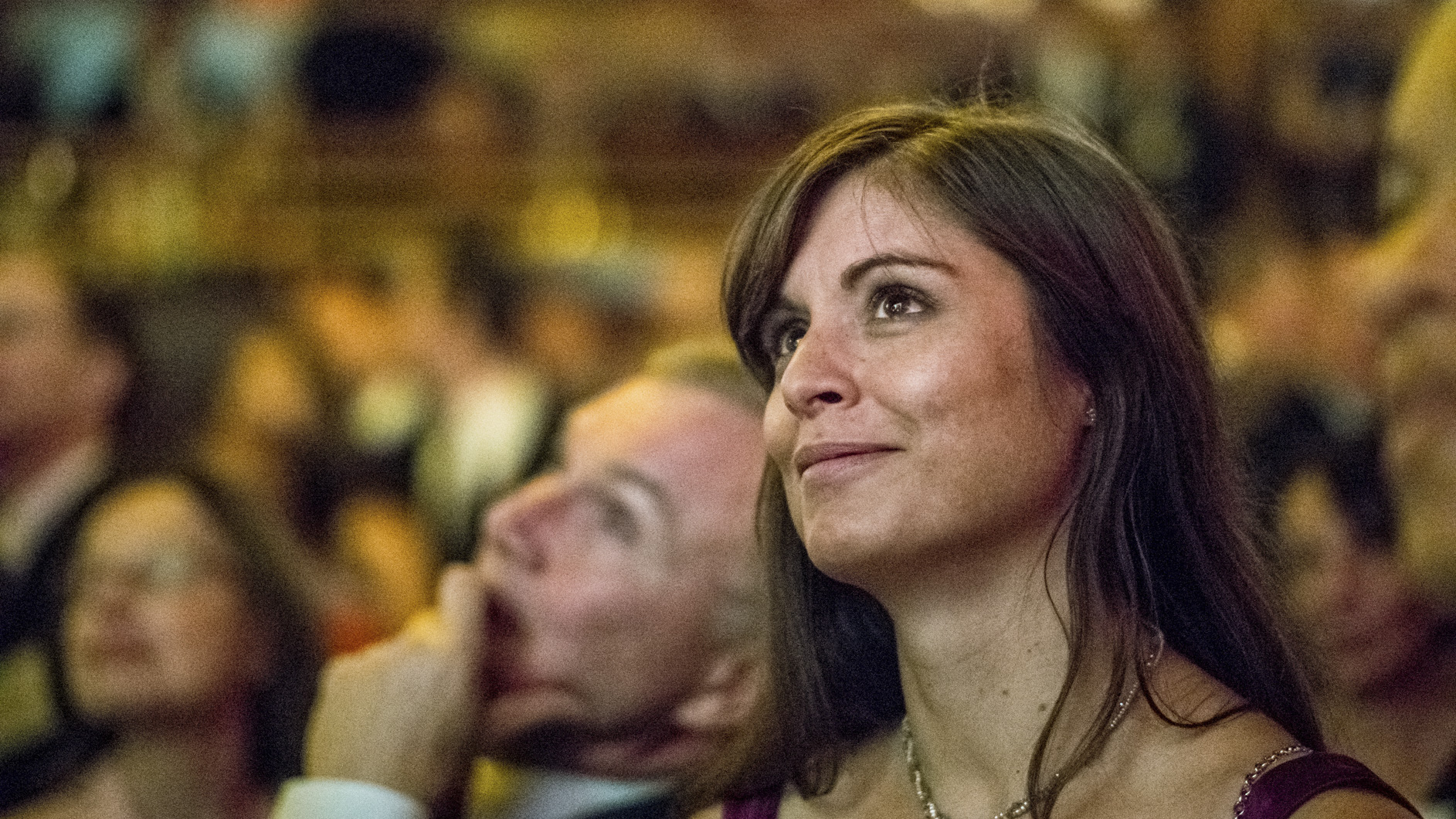Welcome to our series of 100 interviews we will be holding with photographers who use mirrorless cameras for their work! “Switching to a smaller and lighter system” has become somewhat of a buzz phrase as of late, but many working photographers take this philosophy seriously. From medical reasons such as resolving back and shoulder pain to the simple realisation that bigger does not mean better, photographers are turning to mirrorless systems now more than ever before.
This week’s interview is with Mike Peters, a professional photographer and videographer with over 40 years of experience in the field. He is currently the Director of Photographic Services at Montclair State University and has specialised in everything from corporate and magazine work to street photography.
Visit Mike’s photography website and check out his work on Instagram.
All images in this article are property of Mike Peters and are published with permission.
1. Who is ‘Mike Peters’ in three simple sentences?
I am an ordinary man from New Jersey who had a dream of being a professional photographer when I was fifteen years old, believing that it would save me from a life of drudgery and irrelevance working in an office. Forty one years later, I am still pursuing that dream, and indeed my life has been interesting and challenging, every single day. Along the way I became a husband and a father, and my wife and two sons have very patiently taught me how to be a better person.
2. Tell us a bit about what it is like to be the Director of Photographic Services at Montclair State University. What does the job involve?
As a department of one, I have control of how I photograph and am able to impart my vision of how I see the University, and it’s place in the broader world. I shoot upwards of 500 assignments each year, some as short as an hour, and others as long as a day. I work mostly on location around campus, and also in a small studio that I have. It’s gratifying to be able to make images that are useful and serve a purpose in communicating a positive yet real sense of what the students, faculty and campus at large can contribute to a person who is motivated to expanding their horizons in life.
I make photographs for marketing, advertising, our web site, and for publications such as a variety of magazines, view books, annual reports, posters, postcards, and many other printed materials. I see my work printed on billboards along highways, on bus stop shelters, on banners, and on wall sized prints that adorn various buildings on campus.
In addition, I am directing, shooting and editing more video projects each year. As the only imaging professional on staff, I do get my voice heard when it comes to producing all of my projects. I work with a creative director, a marketing director, and a variety of people who plan events, and a have input as to how things happen in many cases, depending on the needs of the situation.
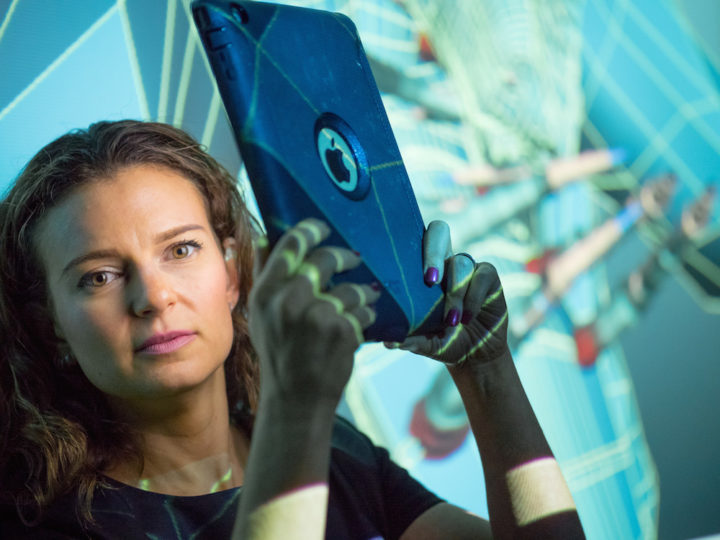
3. You call yourself a “people photographer” at heart. What drew you to people photography in the first place?
When I was young, before I picked up a camera, I was painfully shy and always felt I was on the outside looking in. Initially as I began making photographs, I shot anything but people. I was afraid to direct what I wanted, and often would defer to the subject, and most times that would result in photographs that were far less than satisfying. When on the street, I was terrified that someone would confront me for taking their photo, so of course, I rarely did.
As I began making photos, I also poured over the photography magazines that were in my high school library, and also the LIFE Library of Photography. In those pages, the images that were seared into my memory were always photographs of people. My heroes became W. Eugene Smith, August Sander, Henri Cartier Bresson, Diane Arbus, Arnold Newman, Mary Ellen Mark, Don McCullin, Garry Winogrand, Weegee, Brassai, Robert Capa, Dorothea Lange and many others who all photographed people.
While in college, I had learned how to use and purchased a 4×5 view camera, and began taking it out on the street. It became an easy conversation starter, and gave me an opportunity to ask if I could photograph some of the people that I met along the way.
I liked the photographs I made out in the street with the 4×5 and shot that way sporadically for the next 20 years, making forays out and about with the camera on a tripod over my shoulder. But, as a shy person, I had no confidence the the work that I was making and showed it to few people. I wish I had pursued that work with more confidence. Alas, we are what we are at any given time.
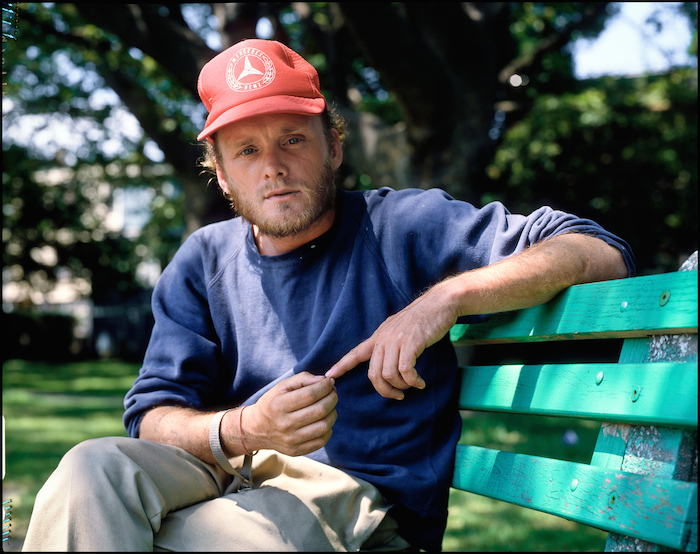
However, through college my fears and shyness persisted and I pursued commercial photography, mostly of objects. I began my career photographing for Tiffany & Co., and quickly figured out that doing this type of work, though seemingly glamorous, was quite dull. I did not care about the things that I was photographing, and I knew that if I stayed, I would be making photographs for which I felt nothing.
I left after 6 months, and spend the next three years assisting other photographers and picking up freelance jobs shooting for magazines. In a bookstore one day in 1981 I came across a book produced by the National Press Photographers Association featuring the photos of the year contest winners. I was smitten by the honesty and grit that was portrayed in those pages. I had always involved myself in personal projects that mimicked the look of photojournalism, and used those images to talk my way into a part time job at a local daily newspaper in a rural part of my state.
I knew that shooting every day would be the absolute best training in working under pressure, and would force me to confront my fears of talking to people. It worked.
I did newspaper work for the next three years full time, and eventually went back to doing freelance work, photographing people for magazines, corporations, advertising agencies, and educational institutions. Montclair State was one of my first clients.
Throughout the years since 1980 I’ve always engaged in making photographs just for myself. And always my photographs of people have held the most meaning to me. I feel that by photographing someone I am giving them my attention, noticing that they exist in that time and place. And in so doing, I also affirm my own existence by photographing those that interest me or in whom I can see something familiar. I too was there.
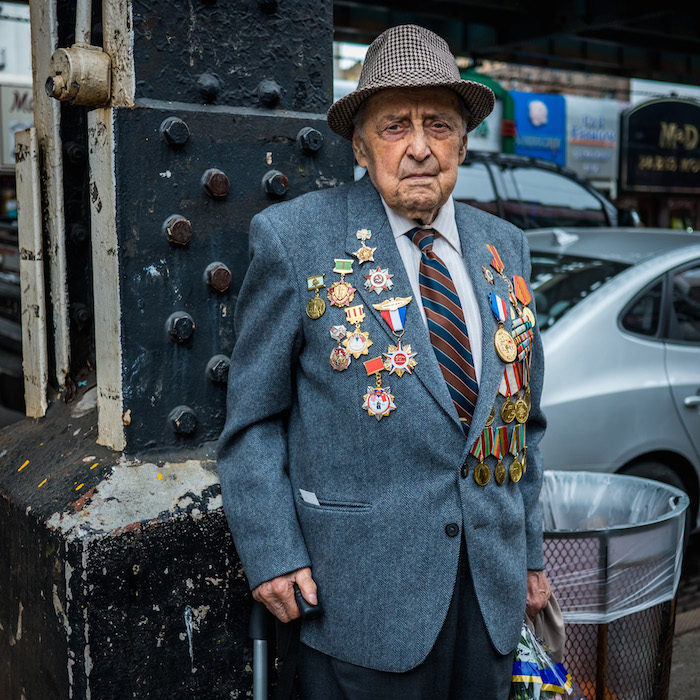
4. You say on your website that you prefer to capture people in the most natural and organic way possible so as to remain true to who they are. This approach is effective for candid photography but how do you make it work for your commissioned work? Is there some degree of direction behind each portrait you take?
At this stage of my career, people hire me because of the way I shoot. I stopped a long time ago trying to be a slick photographer. Usually when I have to make a portrait, I am confident that I will be able to find a natural and existing place where the light it good, the background works. Around the university I know of all the nooks and cranny’s where I can find all of the elements that I need. And as we are continually erecting new buildings, every year or so new places pop up.
When I go off campus to meet someone where they work or live, or for freelance work. I am coming into a situation where I have never been, and have to figure things out pretty quickly. I always try to make the process a collaboration between the subject and myself. I may start out by telling them where to stand based on the light and the background, and perhaps some direction as to how to stand, or sit or whatever, but always asking if it feels right to them.
In my personal work, my approach varies based on how I see certain situations. On the street, I almost never ask to make someones photo. I just walk up and make the photo, and if they see me I smile, nod and say thank you. It depends on if they are just lost in a moment and that is what I want to catch, or if I see someone who I find interesting and they have already seen me, I will sometimes ask if I can make their photo. Rarely do they say no.
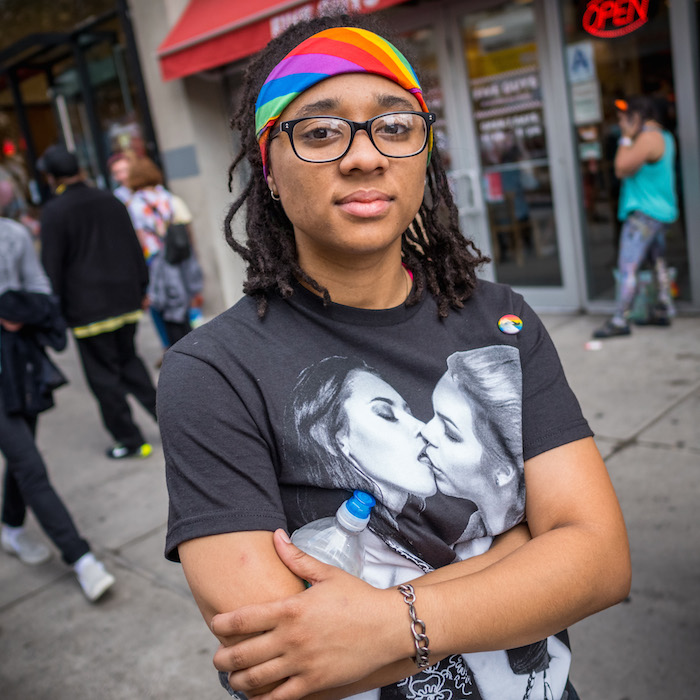
There are some projects where I use one approach exclusively, and others where I mix it up. I try not to confine myself to too many rules. One exception to that however is my preference that people not smile in my photos.
Why, you may ask. Well, I find that when people have a more neutral face that there is more of an opportunity to read into it, as where a smile gives the viewer an answer, a neutral face allows for any number of questions and perhaps a sense of mystery. Also, for me, smiles are marketing. On social media, everyone smiles whether they are happy or not. I’ve met enough people who wear a smile to hide their own unhappiness / aggression / anger / or whatever you want to add to that, to know just how false they can be.
True joy at an event or as a spontaneous outburst among people is a different story, and those are photographs that I also love to make. In the proper context, smiles and expressions of joy are wonderful. But in my personal work, perhaps due to many factors from my past, I see the world differently. When people ask why I don’t want them to smile, I tell them that my inspiration for portraits hearkens back to a time when people took being photographed more seriously, and presented themselves in a more dignified way.
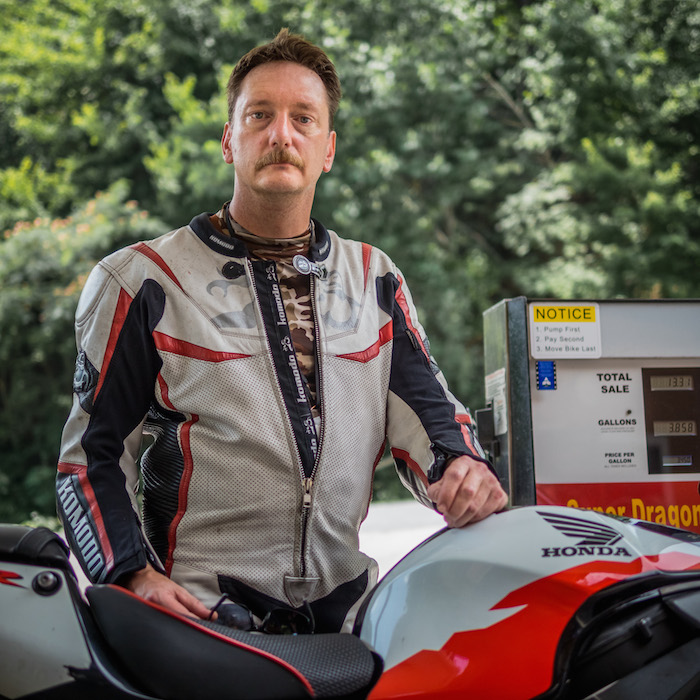
5. As we all know, many people are reluctant to be photographed. What would you say is the best way to put your subject at ease during a portrait shoot?
Most people don’t like being photographed, and I let them know that I truly understand how they feel. Besides my penchant for bad jokes, terrible puns, and a steady stream of mindless banter, I think that the best thing you can do as a photographer is to just be present to your subject and allow them to be who they are, feel what they feel, and listen to what they have to say. It is also terribly important that you are comfortable in your own skin, just being who you are, and confident about what you’re doing. People react to who you are and what you project. If you as a person are honest, comfortable and confident, your subjects will give that back to you. People know a fraud when they see one. Believe in yourself and believe in what you’re doing wholeheartedly and your subjects will go along.
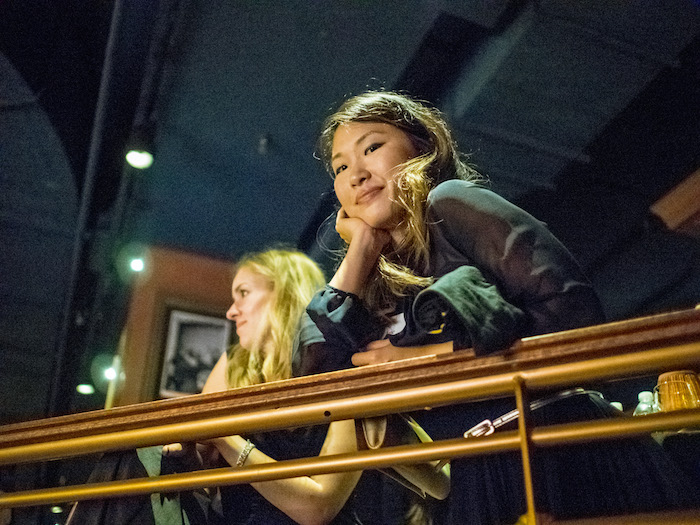
6. Your portraits are beautifully lit. Do you tend to rely on natural light or do you also use flash?
My strong preference is for using natural light. While in college a professor once told me that I had to feel the light. I didn’t know what he meant at the time, but a few years later while creating light for an annual report shoot, the Polaroids that I was pulling for my lighting test seemed to be lacking something. The light was set up in a perfectly competent way, but it didn’t feel right, it was bland. So, I moved a few lights around, turned off a few more, and bingo, it felt more real. Back in the 80’s and 90’s, and shooting iso 64 or 100 color transparency film, creating light was required to make a proper exposure, and everywhere I went with a camera, so did 400 lbs of lighting gear!
Now, with the advent of digital that could work well at iso’s over 800, I can shoot pretty much under any light without the need for flash. When I go into any situation I can always find decent light to work with. I can move from one location to another without having to fuss with gear. All it takes is sensitivity to the light that I’m seeing, and how it plays on the face of your subjects. But it also requires that when you see something that does not work, you have the confidence to say so to your subject and move on so something else.
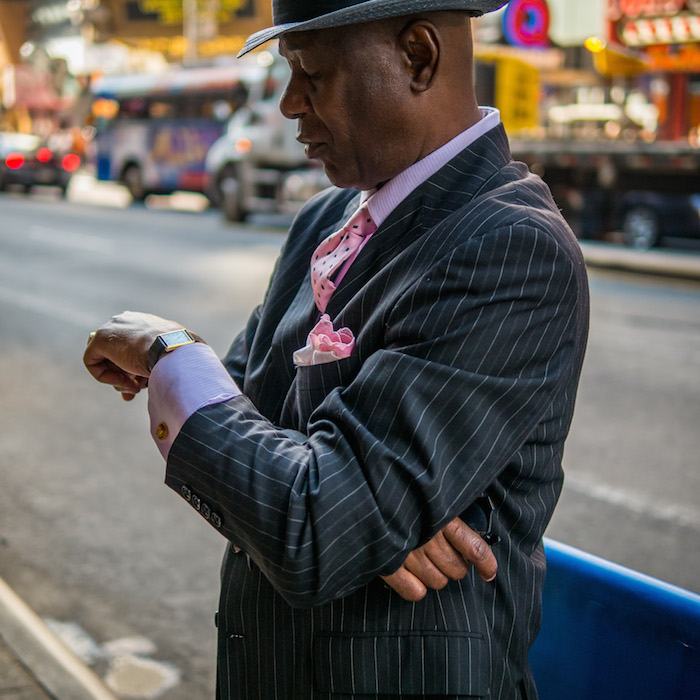
However, there are times when flash is still necessary to make certain situations work, such as when trying to balance a dark interior with a bright exterior and I have to work in that location due to the needs of the designer or even the subject. But I usually know that before going in. Otherwise, I do not carry a flash with me.
Of course, in the studio I am always creating light. And now that I shoot a lot of video, I’ve invested in a continuous light kit. I find it much more simple to photograph people with light I can see directly, and not having to use a flash meter. I see my subject in the light in which the photograph will be made directly in my viewfinder. It’s very freeing and there are no surprises. It also cuts down on blinking, and allows me to make more frames to be able to pick out the best expression without having to wait for the flash to recycle. I can be more spontaneous, and make changes to the way the light looks on the fly.
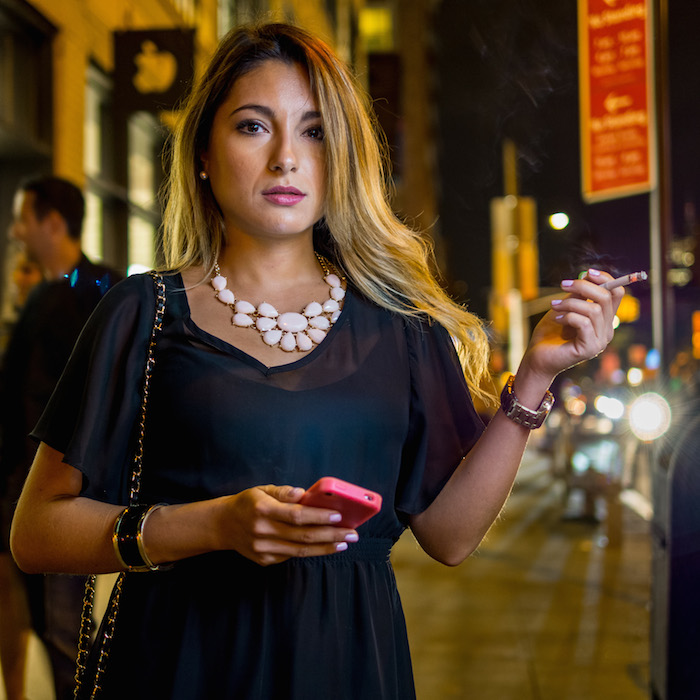
7. You’ve used many camera systems over the years including Nikon, Leica, Contax and Canon. What triggered your switch over to the Panasonic Lumix in 2012 and what concrete advantages do these cameras bring to your line of work?
Before switching to the Lumix cameras, the only digital system I had used was Canon. I did use the Kodak/Canon DCS cameras whey they first came out in the late 90’s, as I had been using Canon EOS cameras since 1989. When I first got my Canon 5D MkII cameras, I began shooting video at work. As the demand for video grew, the limitations of the DSLR video platform became painfully apparent. The lack of viewfinder and the overall poor quality of the image on the back of the camera was an issue.
When the GH2 came out, with a very good set of reviews about it’s HD video capabilities, I was intrigued. I was able to get the university to purchase 2 of them in 2011. Initially, I hated them as they felt like toys. But my first video project made me a believer. The video image quality was a step up from the Canon’s and the ability to use the viewfinder in bright light along with auto focus capability was icing on the proverbial cake.
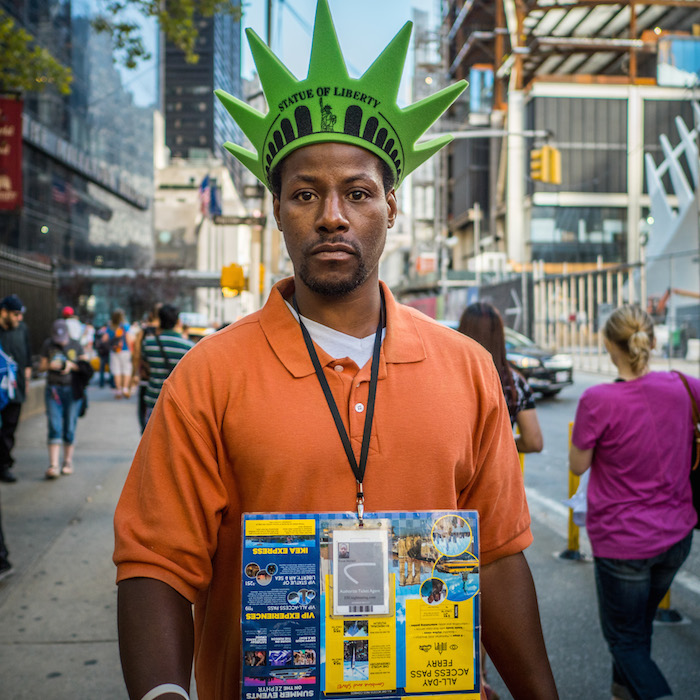
During that time, I was working many extra hours each week, and the fatigue from toting a couple of 5D MkII’s and a brace of lenses took it’s toll on my back. I had a few old Nikon primes from my early film days, and adapted them to the GH2. Suddenly I had a pretty solid little kit that I could tote around all day without feeling crippled at the end of the day.
The still image quality was decent, but you really had to nail exposures as there was little latitude with the raw files. And, it was fun to use. I was a believer when I made a shot for the cover of our alumni magazine with the GH2 and a 30 year old Nikon 50mm 1.4 lens shot wide open at iso 1600, and it looked great!
A few months later, the vastly improved GH3 was available, along with the 12-35 and 35-100 2.8 zooms. Once I got a look at the size of the lenses as compared to my equivalent Canon lenses, I was sold. And it was coming up on convocation and commencement season, which meant that I would be spending many hours on my feet in the hot sun, or inside a huge arena, running around with my gear, and my back was worse than ever. The thought of doing that with my Canon gear was too much to bear. I had a bit of my own Canon gear that I would use on personal projects, and I immediately traded what I had to get two GH3’s and the two zooms.
My very first assignment with the GH3’s was an evening convocation in a football stadium, in the rain. And the results were brilliant! Perfect focus, consistent exposures, each moment captured when I wanted. They were so much MORE responsive than my 5D MkII cameras, and the auto focus just worked each and every time.
At the end of the night, after 5 hours on my feet, shooting around 3000 frames, and not having to change batteries in the cameras, to come back to my computer to see the results and I was amazed.
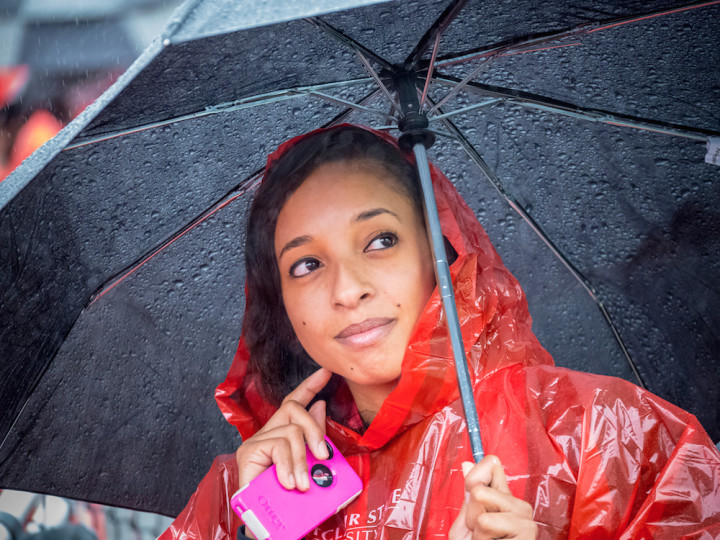
Assignment, very first with GH3, 35-100, in the rain, early evening.
The EVF has completely spoiled me. Being able to see my exposure in real time allows me the ability to change on the fly in the moment. That is the most astonishing thing about a good EVR. I shoot a lot of dance and theater performances, and in those situations when shooting with a DSLR, you are essentially shooting blind to your exposures unless you constantly chimp on the back screen when you perceive that the light has changed. When you do that and make your adjustments, things have happened that you have missed many potential shots. Now, I miss nothing as I am always able to keep my eye to the finder.
Another factor with the event and performance photography is the simple act of lifting the camera to your eye hundreds or thousands of times. The sheer weight of the DSLR and lens would often cause my right hand to cramp by the end of the night, and eventually led to tendinitis in my right shoulder.
So, everything about the Lumix cameras has made my life more pleasant when it comes to making images and video.
The GH3 image quality was pretty much equal to the Canon gear that I was using, and at high ISO values actually much better. And the video was amazing. The fact that the battery has such tremendous capacity where I can often get upwards of 1800 frames before I have to change also sets the GH cameras far above any other mirrorless camera as a professional instrument. The lens selection, between Panasonic and Olympus, along with many third party manufacturers is remarkable. And finally, the free angle finders of the GH cameras means that I don’t have to be on the ground to shoot from the ground, or from high angle, or around corners, or from inside exhaust hoods in science labs, or, well you get the picture. If I can imagine a shot, I can put the camera there and make the photo, either through seeing the camera directly, or via wifi. Amazing.
And the GH4’s have raised the bar even further for image qualtiy, and 4k video has given me more video capabilities. Now, the GX8 has gone to another level for image quality. I’m just beginning to explore what it can do, but right out of the box, the viewfinder is a revelation and the new chip is more detailed, and even better at higher ISO ratings.
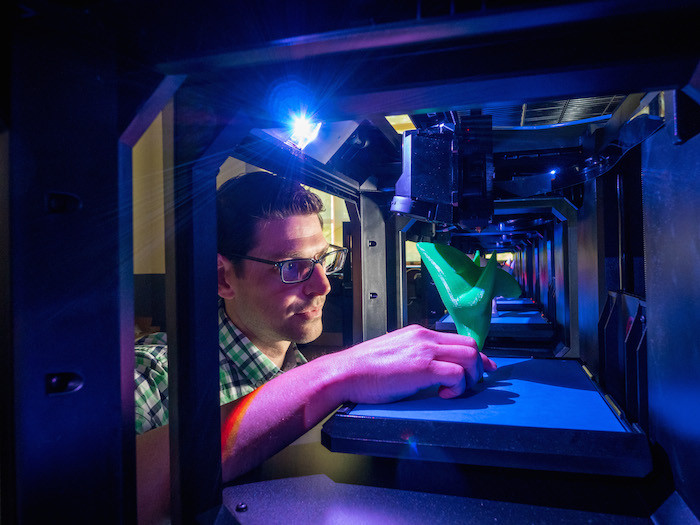
8. Have you ever printed the images taken with your Lumix cameras? If so, what was the largest print you made and what did you think of the results?
I have printed on an Epson 7900 images that were 24×32 inches from the GH2, 3 and 4 cameras, and I have been very impressed by the detail from the cameras and the quality of the lenses.
Up until 2013, I was still shooting film for all of my personal work. I shot with a Hasselblad F system to take advantage of the fast lenses as I do much of my work on the street in available light. Plus the focal plane shutter froze action better than a leaf shutter, and the lenses worked well wide open. I scanned my images at maximum resolution on an Imacon scanner, and from those scans I made my prints. Either C prints on Kodak Endura paper, or on the Epson 7900 on Ilford Gold Fiber Silk. My preferred film in the Hasselblad was Fuji NPZ 800, and then Kodak Portra 400 or 800. I did a test, shooting the same subject with my Hasselblad and the 110 Planar at 2.8, and my GH3 with the 25 Summilux at 1.4, cropped square as I prefer to work with my personal photographs. The 24 inch square prints from the GH3 compared very favorably. The look is different, with the film images having a softer and grainier look, while the digital images are smoother and can have a bit more sharpness. But if you process them to your liking, they can look pretty much the same. Last year I had images in a show from a project where I have shot both cameras, and no one could tell the difference from one to the other.
I have also had a number of files from ISO 3200 and 6400 dance and musical theatre production photos printed on a poster outside our theater that are 6×8 feet, along with a banner inside the theater that is 20 ft tall, sliced from a horizontal image.
And in one of our dining halls there are three wall prints, two that are 8 ft tall, from horizontal images and another that is about 18 ft wide from a horizontal image. On those images I can see the stitching on a person’s denim pants, the striations in guitar strings, and the hairs on an athlete’s legs. Granted, these are commercially printed CMYK screened images, but impressive none the less. What this tells me is that what I get out of the micro 4/3 cameras is more than sufficient for my needs.
Now, if I were a landscape, wildlife or an architectural photographer, or I felt the need to crop, I might need more megapixels, but I photograph people, and I always try my best to get the composition right in the camera so I rarely crop, so for what I do and how my photos are used, I am more than happy with what I get out of these cameras.
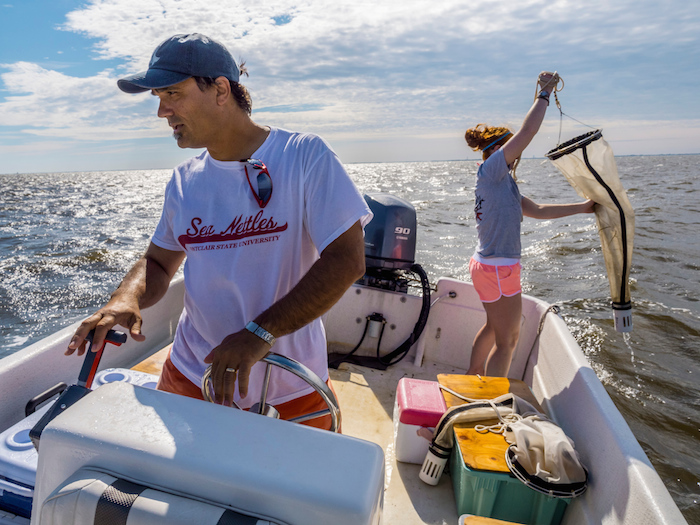
9. With your Lumix cameras, you’ve covered genres as diverse as dance/theatre, corporate and weddings. Have you ever found yourself in a situation where they did not perform as well as you had hoped?
Honestly, there is no situation where I have been let down by the performance of the Lumix cameras. There have been times when I didn’t use them properly, but that’s on me. The cameras cannot read my mind, so if I don’t put the focus point where I need it, then it’s not the fault of the camera. There is just so much more that I CAN do with these cameras that I could NOT do with a DSLR that it’s just amazing.
I feel with these cameras that I’ve finally found the tool with which I can overcome any challenge, and make images that I only dreamed of before, and work in ways that I never imagined.
The cameras are completely transparent in my hands, like an extension of my eye, they never get in my way.
Last year I did a project about shoppers at a shopping mall around Christmas time. I wanted to be completely candid as shopping malls are private property, yet as a public venue, are legal to shoot in. However, if security asks you to leave, you must leave.
So, I put the GX7 that I was using at the time on silent mode, and hooked the camera up via wifi to my cell phone, and was able to photograph discretely without anyone noticing. The camera hung over my shoulder, and I could stand right next to people and make photos, while the whole time being able to see my image, move focus points around and adjust my exposure. Brilliant!
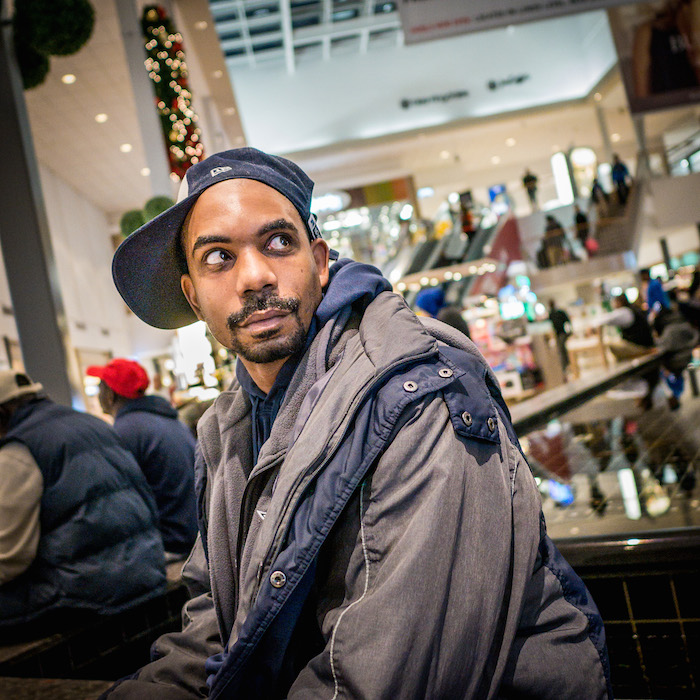
10. What are your three preferred lenses for the Micro Four Thirds system and why?
The three Leica primes, 15, 25 and 42.5 are really special lenses. I often use only those lenses at events or when doing documentary type work. For my personal work, I use the 15 and 25 when I have two cameras, and for when I want only one camera, I’ll use the 20 vII.
The Leica primes are perfect for photographing people, as they are very dimensional in how they draw, and wonderfully sharp wide open without being clinical or over sharp. There is a softness in tonality to them that works well with tonal transitions in skin, and also is able to hold the detail in highlights and contrast in shadows. Plus, they work well wide open, where I shoot them most of the time.
However, as much as I like the Nocticron 42.5, it’s heavy and more often than not I’m actually carrying the new Lumix 1.7 version as it’s much lighter and focuses much closer, and optically it gives up very little to the Leica design. But when I need that extra stop, that 1.2 can be a life saver.
The Olympus 12 and 75 take care of the wide and long end of the range, and they too are wonderfully sharp. So, really it depends on the circumstances. If I’m at an event and am working close to people, it’s the Leica primes, and if I need a bit more range, it’ll be the 12, 20, 75 combo. If I’m on shooting personal work, it’s either the 15/25 combo or the 20 by itself. Nothing is simple.
On campus, the 14-140 vII works well when outside, and combined with the 7-14 and 100-300, I can cover a lot of ground. For sports and performing arts, the 12-35 and 35-100 2.8’s are my preferred set up.
So you see, they are all my favorite, depending on what I need to do. And that is the beauty of the Micro Four Thirds system, everything you need is there, and none of it is too heavy to carry all day long. How great is that?
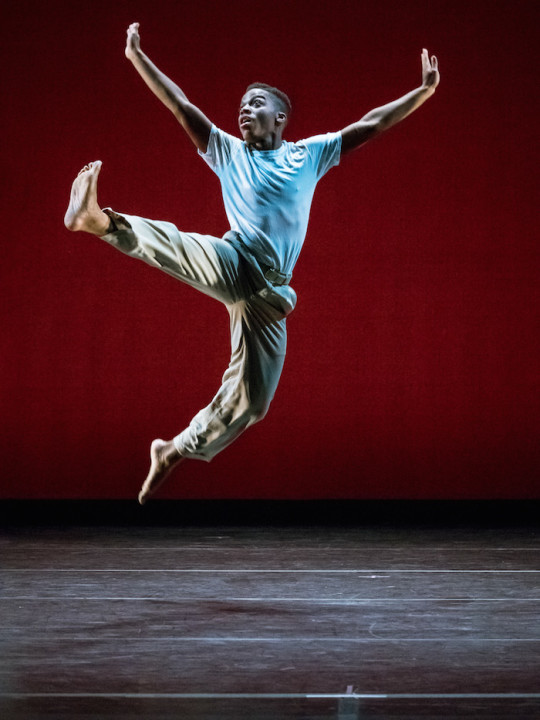
11. You also do numerous personal projects, many of which involve candid shots of people on the streets. Can you tell us about the project that has had the greatest impact on you and your photography?
I would have to say my earliest work with the 4×5 has had the greatest impact on me and how I do my personal work today. For many years I was lost as far as who I was as a photographer. In the 1990’s I got sidetracked by my commercial work and seemed to lose my voice. Going back over that early work showed me who I really was as a photographer, and pointed the way forward. I discovered, or maybe rediscovered that I was a portrait photographer.
Whether I’m asking permission or shooting candidly, I am truly interested in people. How they present themselves in public give the viewer a multitude of clues as to what their life is about in that moment. I don’t pretend to know for certain, but from what I see and how I perceive it, I can make up a narrative in my mind, as can the people who look at my work. I’m not trying to give answers or state facts, but to ask questions by photographing the clues.
I often see the people I photograph as part of a story, be it the beginning, middle or end, there is a narrative there for each of us to make in our own minds, and what we come up with says more about who we are than about the subject of the photograph. It’s all about finding a bit of yourself in the faces and body language of others.
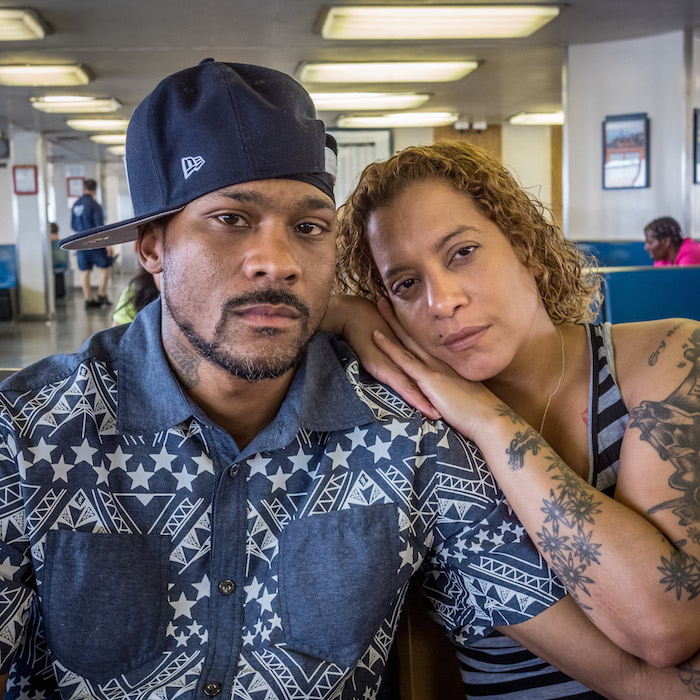
Personal work, GH4, 20mm @ 5.0, existing light from overhead lights and windows, asked.
13. There are many great compact systems out there at the moment. If you hadn’t chosen to go down the Lumix route, would you have chosen another mirrorless system? Which one and why?
If Olympus had made cameras with larger capacity batteries, and less complicated menus, and the free angle screen, I would have been very tempted. However their lackluster video performance would never have worked for what I need and want to do these days.
Sony makes great chips and interesting cameras, but also with tiny batteries, and they have a very thin lens line for a working pro. In addition, the full frame cameras, though small, need gigantic lenses, so there would be little in weight savings by using them. The primes that they are coming out with are huge and heavy. Plus, the don’t offer a square crop in the camera, so there is no way I could use them for personal work.
Fuji does crop square, but again the battery performance is very limiting for heavy usage, the controls are finicky for my taste, and the sensor didn’t play well with Adobe products until recently. Plus, the video is not great, and the lenses are heavy and limited in scope.
Samsung is an interesting company, but again, the lenses they offer are paltry, and not so small. And, who knows how serious they are. They are not a player as far as I’m concerned.
So, that leaves me with Lumix cameras. The GH3/4 cameras are true professional grade workhorses and have never let me down in any way.
There is a fantastic range of lenses that I have at my disposal, and they occupy a real sweet spot in terms of image quality, size, weight and battery life. There is nothing that I cannot do with them, and there is more that I can do than I could with any other camera on the market today. The GX8 shows that there is more available quality wise in the format, and I assume that there will be more beyond that.
For me, what I get out of these cameras is all I need. For my personal work I can make images that express how I feel about what I see, and make prints that rival or exceed what I got out of my Hasselblads. And for my commercial work, the ability to make images that will reproduce up to billboard size with a camera and lens selection that does not burden me with excessive weight and bulk, yet performs under any and all circumstances is a dream come true.
Finally, after 40 years of looking, I’ve found the perfect camera for me. I’m a happy guy.
Do you have any questions for Mike Peters about his work or his Lumix cameras? If so, leave him a comment below or contact him on his website or Instagram!
